The One Ring’s Second Edition Promises a Faithful Tabletop Rendition of Tolkien’s Middle-earth
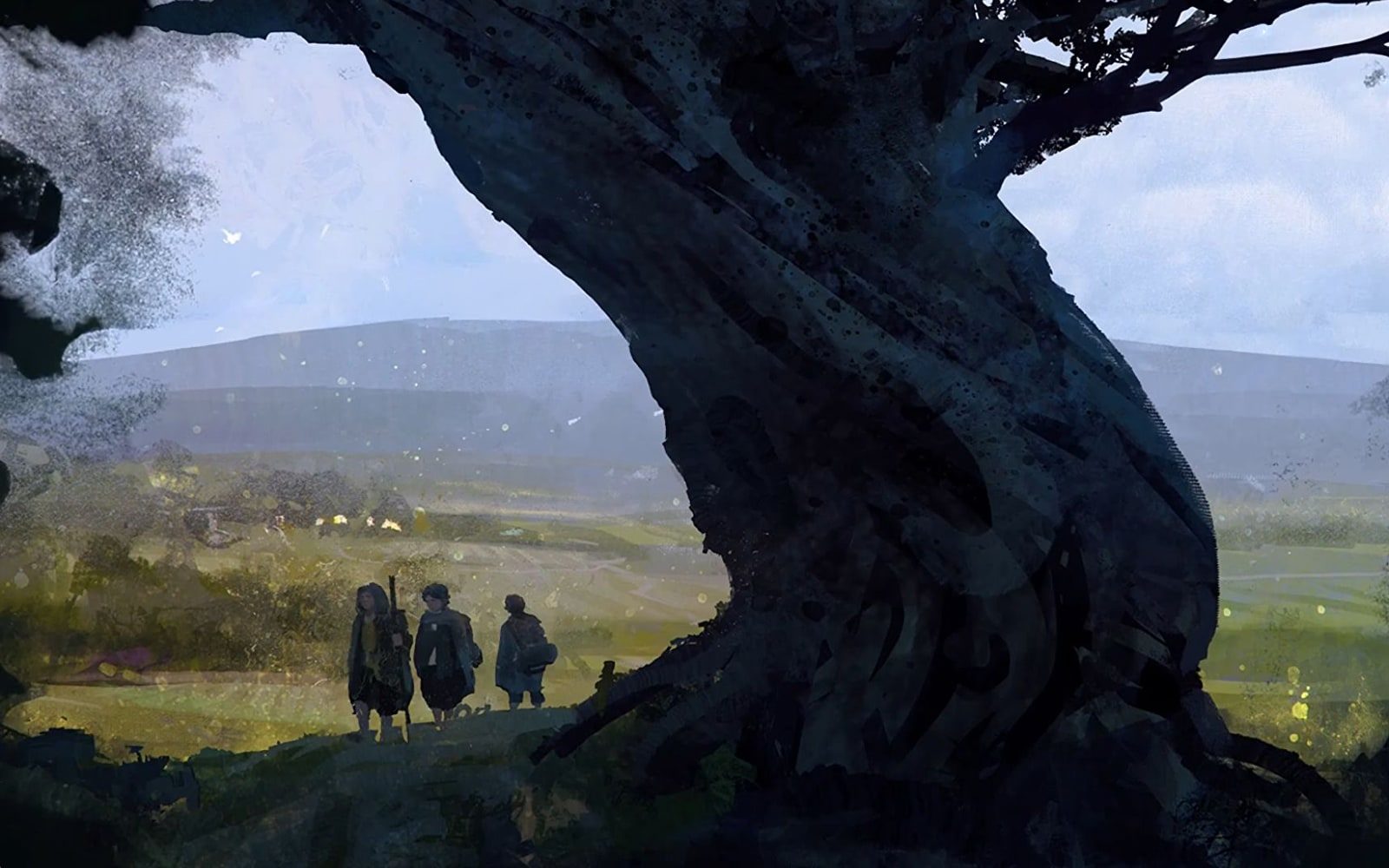
Earlier this year, Free League Publishing — the company behind Symbaroum and Tales From the Loop — launched a Kickstarter campaign to fund development of the Second Edition of The One Ring, a critically acclaimed tabletop role-playing game based on J. R. R. Tolkien’s beloved novels. The campaign was a massive success (to put it mildly), becoming fully funded in just four minutes and ultimately raising nearly $2 million for the game’s development.
Since then, Free League and The One Ring’s developers, including lead writer Francesco Nepitello, have been steadily working on the game. Back in June, they released alpha versions of the Second Edition’s core rules and character sheet to Kickstarter backers. Since then, I’ve been slowly reading through the alpha documents, and in order to help me better understand The One Ring, I thought I’d post some initial thoughts and impressions.
Disclaimers: Aside from watching some YouTube videos, I know very little about The One Ring’s First Edition. As such, I can’t speak to how the Second Edition compares to it, positively or negatively. I’m very much coming to The One Ring as a total newbie. Since this is a review of alpha materials, there may be differences with the final release version. And yes, I was one of the Kickstarter campaign’s backers.
Even in these alpha materials, it’s readily apparent that The One Ring isn’t just Dungeons & Dragons wrapped up in a few Tolkien-isms. Rather, the game’s creators strike me as very serious about being faithful to the spirit, if not the letter, of Tolkien’s classic works.
This certainly comes through in the game’s setting. The One Ring takes place in the year 2965 of the Third Age (approximately 50 years before Lord of the Rings) in the Lone-lands of Eriador, a vast region in northwestern Middle-earth. Once home to Arnor (the northern kingdom of the Dúnedain before it fell to ruin over 2,000 years prior), Eriador is now home to places like Bree, Rivendell, and the Shire. Your character is one of the few adventurers daring and hardy enough to venture into the Lone-lands to protect everything and everyone you know from evil’s burgeoning influence.
But this devotion to, and evocation of, Tolkien also comes through in the game’s actual mechanics, including character generation and various gameplay aspects.
Making a Character
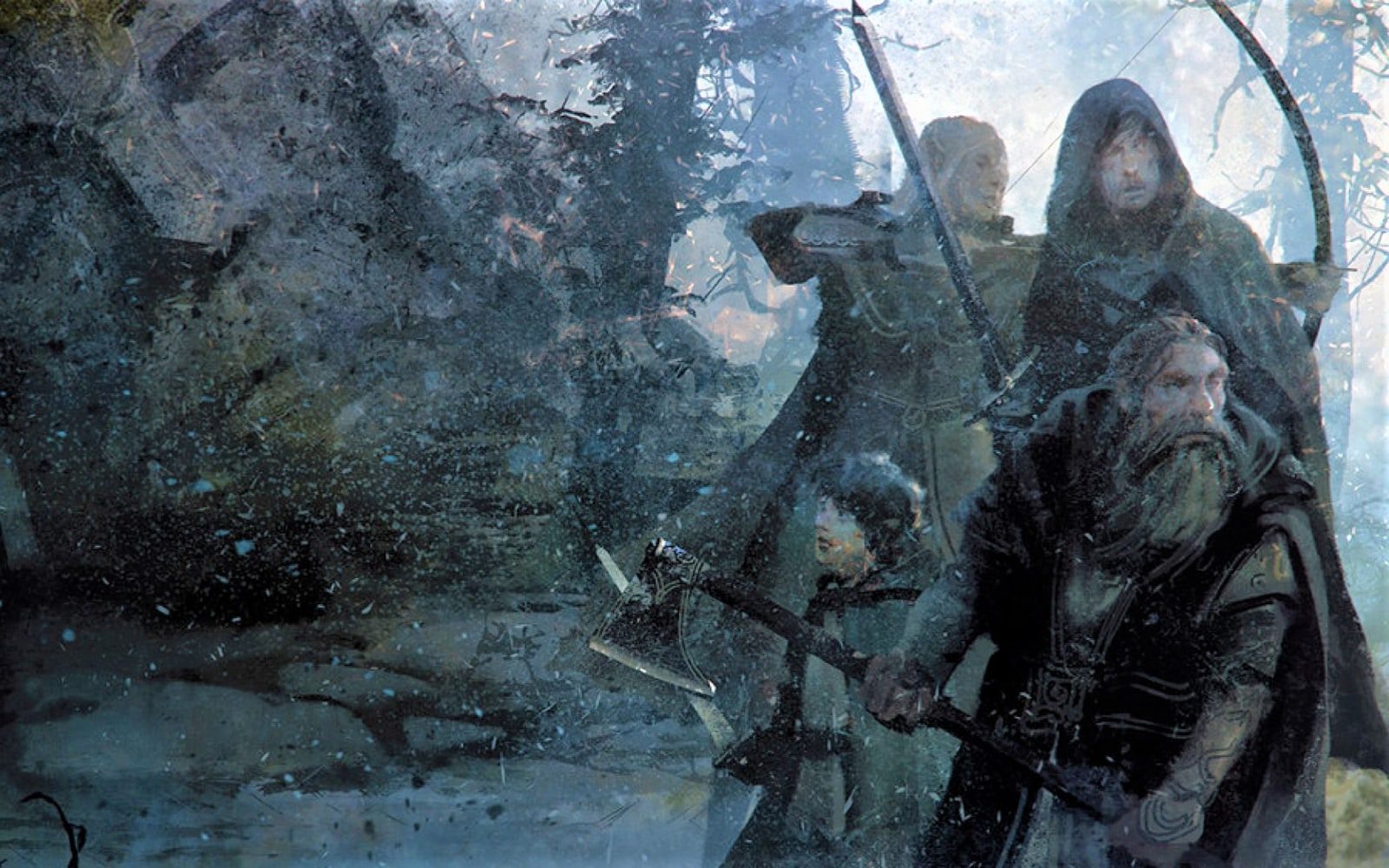
Similar to D&D, you create a character in The One Ring with various attributes, skills, and virtues, and then set off on adventures in the Lone-lands as a member of your very own fellowship. But unlike D&D, there’s the sense that you shouldn’t necessarily think of your character as an epic, world-shaping hero. As the game puts it (emphasis mine):
Adventurers are often simply common individuals born in exceptional times. They have most likely led an ordinary life until the day something happened and changed the way they looked at their world and the people they knew. For some reason, the place they grew up in didn’t look as interesting and boundless as before, or they started to realise that they weren’t doing enough for the safekeeping of their loved ones by staying at home in idleness, pretending shadows weren’t growing nearer and nearer every year.
Adventurers are not soldiers or mercenaries following the commands of a lord, nor are they subtle Wizards trying to weave the threads spun by fate: they are bold souls putting themselves in peril of their own free will, sometimes simply for the love of adventure itself.
In keeping with Tolkien’s philosophy, a little humility seems key here, as does a sense of sacrifice and a celebration of otherwise normal, mundane people taking a stand against evil.
The first step in creating a character is selecting their culture (The One Ring’s approach to races). There are six cultural options taken right out of Tolkien’s books, including Bardings, Dwarves of Durin’s Folk, Hobbits of the Shire, and Rangers of the North
Each culture has unique characteristics as well as a “blessing,” i.e., a special ability that all members of that culture enjoy. Dwarves are “Redoubtable,” for instance, which enables them to wear heavier armor, while Rangers of the North are “Kings of Men,” which grants them a bonus to one of their attributes.
Even here, it’s obvious that the game’s developers are pulling a lot of mood and style directly from Tolkien’s own writings and world-building — which I love. Consider the rules’ explanation for the Rangers’ “Kings of Men” blessing:
Some say that the lordship of the folk of Arnor is a thing of the past. Yet, the Rangers of the North have inherited the sinews of those Men who wrested the Ring from the burning hand of Sauron.
Flavor text like this, combined with copious, well-selected quotes from Tolkien’s books, really helps to sell and justify the game designers’ various decisions while also making everything feel appropriately and authentically Tolkien-esque.
Your character’s culture determines their attributes and skills, i.e., what they can do and how well they can do it. The One Ring characters have three core attributes that establish everything about their abilities:
- Strength determines your character’s physical qualities (e.g., toughness, speed, attractiveness).
- Heart determines your character’s emotional qualities (e.g., optimism, empathy, bravery).
- Wits determines your character’s mental qualities (e.g., attentiveness, ingenuity, wisdom).
Each culture has several possible starting scores for these attributes — as you might expect, Dwarves will generally have a higher Strength, Elves will generally have a higher Wits, and so on — and you can either pick one set of scores or roll a d6 and let fate decide. Once they’re selected, these core attributes determine several “derived” stats, including Endurance (which measures your character’s stamina and ability to withstand harm) and Hope (which measures your character’s spiritual fortitude and how well they can overcome great odds).
Your culture also determines how gifted you are in each of the game’s eighteen skills — which include Awe (your ability to command respect), Enhearten (which lets you encourage your comrades), and Song (useful for reciting poems and singing songs, also very Tolkien-esque) — and which of those skills can be your “favoured” skill.
Next, you pick a calling (The One Ring’s approach to classes). There are six possible callings, including Champion (a valiant warrior sworn to defeat evil’s forces), Messenger (someone who travels far and wide to warn others of impending danger), and Warden (a guardian who wanders the wilderness, defending civilization from unspeakable evil). You can certainly draw some parallels with classes in other RPGs — wardens seem very much like rangers, for example — but more importantly, each calling has parallels with Tolkien’s writings.
One interesting aspect of the game’s callings is that each has a Shadow Path, i.e., what happens should your character become overly influenced by the Shadow (more on that in a moment) and begin to twist their calling. A champion may become increasingly violent in order to defend their own honor above everything else. Similarly, if a warden’s not careful, their constant, lonely battle against Sauron’s forces may lead them into despair.
This Shadow Path mechanic feels entirely appropriate to Tolkien’s mythos given that one of its dominant themes is the subtle nature of evil and its ability to twist and tempt even the most noble of ambitions and most stalwart of heroes. And it adds a certain melancholy to the game that also feels quite Tolkien-esque.
There are some additional steps to character creation, including “purchasing” additional ability bonuses that best reflect the experiences of their pre-adventuring life; selecting their starting weapons and equipment; and establishing their Company (i.e., the party) with its own patron, safe haven, and so on. When all is said and done, however, the resulting adventurer will (hopefully) be ready to hold their own against the evils plaguing Eriador.
Game Mechanics
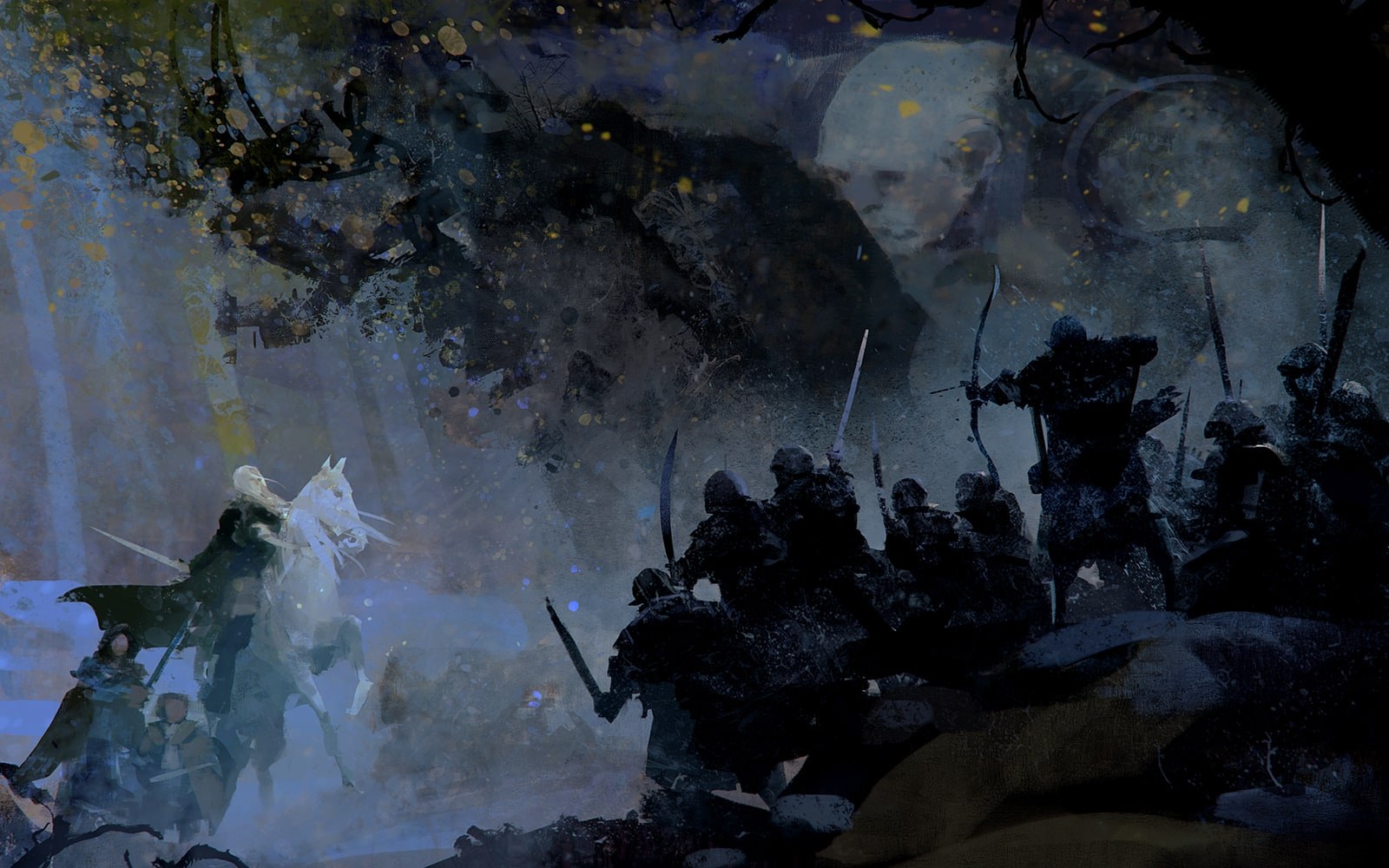
Some of The One Ring’s mechanics will be familiar if you’ve played games like D&D for any length of time, but many are wholly different. Perhaps the most obvious example of the latter is the type of dice that are used. In D&D, you roll a d20 for almost everything. In The One Ring, however, you roll a combination of d12 and d6 dice, or “Feat” and “Success” dice, respectively.
When your character needs to achieve something, you’ll generally roll a single Feat die plus a number of Success dice equal to your character’s rank with the relevant ability. You add up the results and compare that to a predetermined “Target Number” (TN) to see if they’re successful or not. Unlike D&D’s Difficulty Class, the TN isn’t defined by the Loremaster (The One Ring’s version of a Dungeon Master), but rather, by your character’s own attributes. Each of the three core attributes — Strength, Heart, and Wits — has a TN that’s equal to 20 minus the attribute’s score.
Here’s how it might look in actual gameplay: Your character is trying to find the forest path after getting lost. This utilizes the Explore skill, which is related to the Wits attribute. Their Wits score is a 6, which means their Wits TN is 14. Since their Explore skill is ranked at 3, they’ll roll that many Success dice alongside the Feat die. The Success dice return 4, 3, and 3, and the Feat die returns a 7, all of which add up to 17. Congratulations, you’ve found the path and can continue on your way.
Without having yet played the game, I can’t say how well this mechanic actually works in gameplay. (As you might guess, though, it’s inspired quite a bit of debate in the game’s forums.) But a few things strike me:
- Dice rolls become simpler and more streamlined, since you know what you’re always trying to beat. This will be especially handy in the game’s planned “Solo” mode, which eschews the need for a Loremaster altogether.
- I like its thematic aspect, i.e., the biggest challenge to your character’s success might be their own weaknesses.
- If characters are rolling against the same TNs for most endeavors, then finding ways to ensure that some endeavors are more difficult than others is a necessity. In other words, finding your way out of a forest, persuading/intimidating others, and attempting to solve an ancient puzzle or riddle — all of which require beating your character’s Wits TN — shouldn’t necessarily be treated the same in terms of difficulty and risk.
The One Ring’s mechanics have several additional wrinkles, including:
- A Feat die has two special icons: a Gandalf rune and the Eye of Sauron. If your Feat die lands on the Gandalf rune (a 12 on a regular d12), that’s an automatic success regardless of the Success die. If your Feat die lands on the Eye of Sauron (an 11 on a regular d12), however, then your Feat score is zero, which dramatically increases the possibility of failure.
- If you beat the TN and roll a 6 on any of your Success dice, then that means your efforts were especially successful. Any d6 that lands on a 6 can then be “spent” to get an additional bonus for that particular endeavor, like turning another player’s failure into a success or gaining some additional insight or knowledge. (How you role-play that is entirely up to you, though.)
- It’s possible to make “favoured” and “ill-favoured” rolls, which is similar to rolling with advantage or disadvantage in D&D. When making a favoured roll, you roll two Feat die and use the higher result. Conversely, for an ill-favoured roll, you roll two Feat die and use the lower result. It’s also possible to be an “ill-favoured” character if you’ve become too influenced by the forces of evil, meaning that all of your rolls are ill-favoured.
To that last point, one mechanic that feels particularly Tolkien-esque is the game’s approach to the pervasive and lingering effects of evil, i.e., the Shadow. Being a hero is costly; it’s a given that your character will be left marked and scarred — physically, emotionally, and spiritually — by their unending battle against Sauron’s forces and the many other evils littering the Lone-lands.
Hope and Shadow
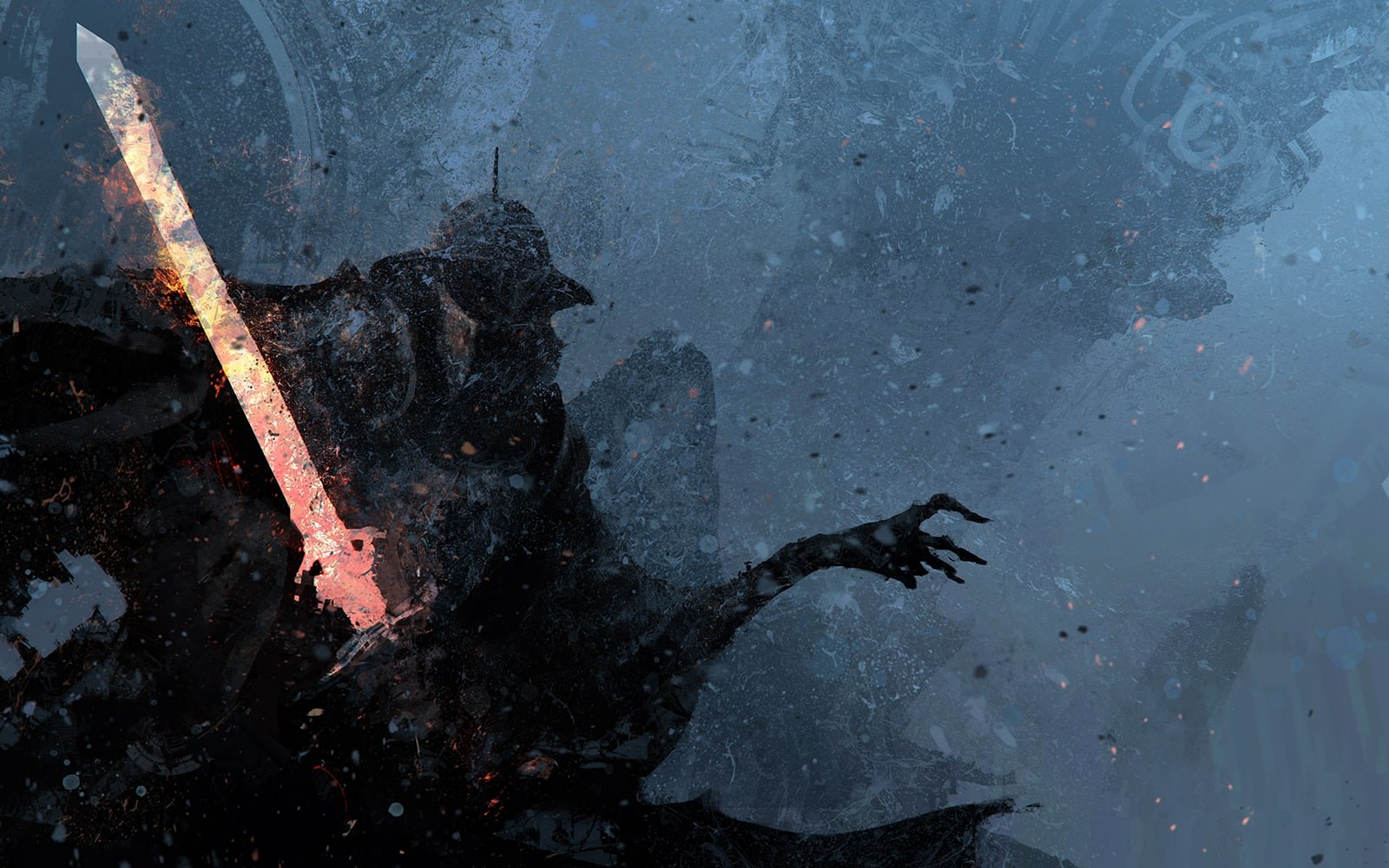
In addition to all of their other attributes and skills, your character has a Shadow score. Whereas their aforementioned Hope score measures their spiritual reserves and ability to overcome doubt and darkness, their Shadow score measures the creeping influence of evil. These scores are constantly at odds with each other.
If a character’s Shadow score begins to eclipse their Hope score — perhaps because they encountered a terrifying creature or committed some foul deed — then several things can happen:
- They become Miserable. Any Feat die that lands on the Eye of Sauron results in an automatic failure regardless of the Success die.
- They become ill-favoured, as mentioned above.
The only way to overcome the Shadow in such desperate cases is through a bout of madness. Your character loses control of their actions for a period of time and inevitably does something they’ll regret, like betray their fellowship or flee in cowardice at some crucial moment. (Think Boromir attempting to steal the The One Ring from Frodo.) Furthermore, they begin proceeding down their calling’s Shadow Path and develop serious character flaws.
The One Ring seems to assume that your character will suffer multiple bouts of madness, and even admits the possibility of succumbing to the Shadow, in which case your character’s removed from the game altogether. Reading through these rules, I detect a certain grim-ness that feels quite befitting for a Tolkien-inspired game. It’s not the over-the-top grimdark of, say, Warhammer 40K or Zweihänder, but rather, a pervasive melancholy that could make for some interesting role-playing sessions — depending on how much you lean into it.
Design and Aesthetics
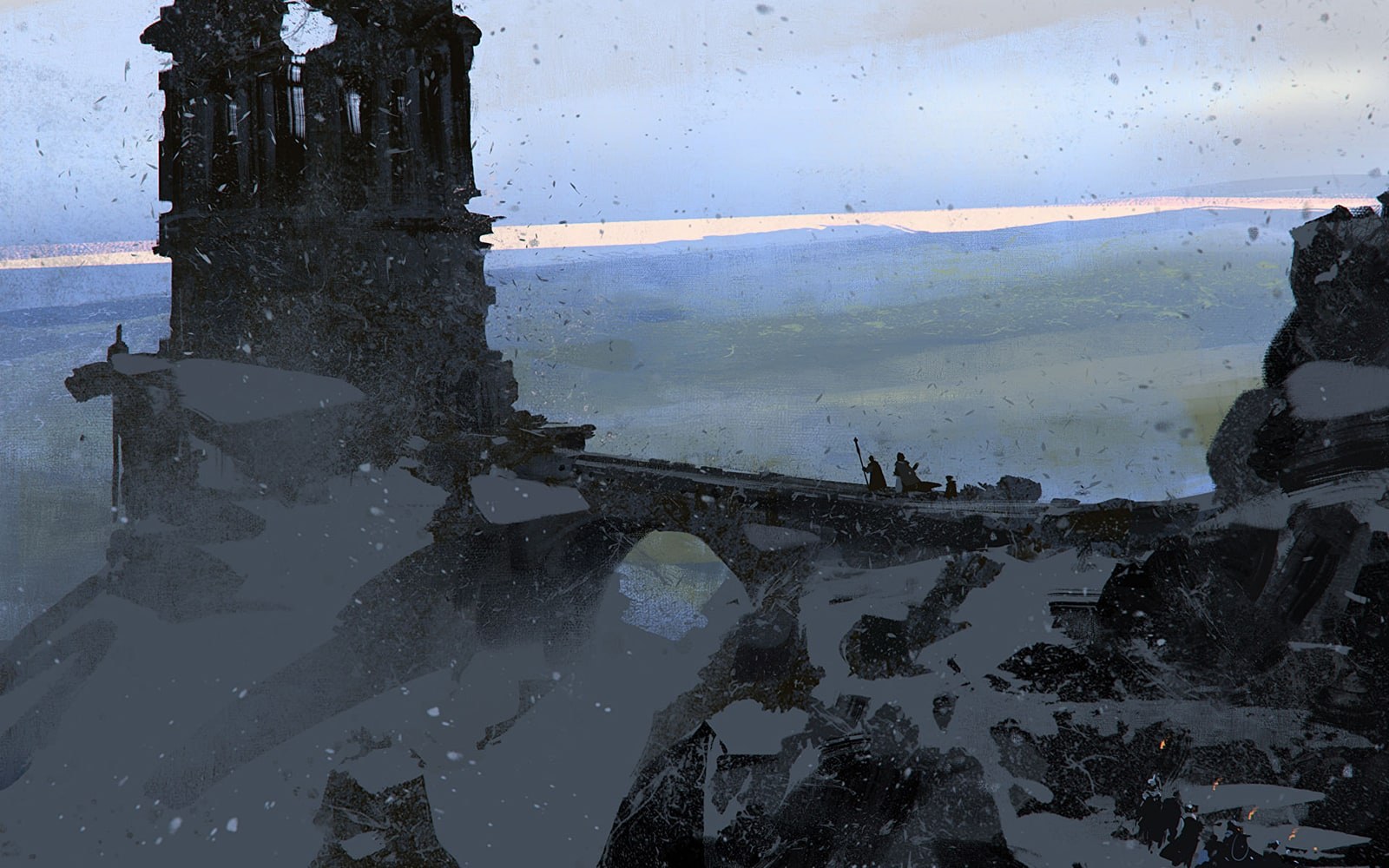
I’ve already mentioned how much I love the use of flavor text and Tolkien quotes to establish the game’s mood. But I’d be sorely remiss if I didn’t also highlight the incredible artwork that fills the book’s pages, be it wonderfully atmospheric full-color paintings or detailed sketches of Middle-earth locales, cultures, and creatures — some of which I’ve included in this post. The artwork adds so much to the game’s mood, as does the book’s layout, typography, and little graphical flourishes.
Skimming through the PDF alone is a treat for the eyes. Suffice to say, though, I can’t wait to hold the final printed book in my hands and leaf through its pages, drinking in the artwork alongside the rules and text.
Obviously, as an alpha release, the PDF has typos and all that. And I suspect it’ll receive some additional organization as more artwork is added. It can be a bit daunting to read through, e.g., making it through the “Action Resolution” chapter (which explains all the dice mechanics) in order to get to the character-related content. While understanding “Action Resolution” is obviously critical to playing the game, I wonder if it wouldn’t be more inviting to first get players immersed in the world-building, i.e., the game’s cultures and callings.
One other aspect that I’m excited about are the game’s various physical components, specifically the full-color map, info cards, and — best of all — custom-made Feat and Success dice that are being created as part of the Kickstarter campaign.
I know this post is already plenty long, but even so, I feel like I’ve barely scratched The One Ring’s surface.
For instance, I didn’t talk about the Adventuring and Fellowship phases of gameplay, during which your character — respectively — goes on adventures and recuperates from said adventures. The Fellowship phase in particular contains some interesting role-playing opportunities, like raising an heir and song-writing. The former is used to continue your character’s legacy after death or retirement puts an end to their adventuring and I suspect a gaming group could have a lot of fun with the latter given the right beverages.
I also didn’t talk about the alpha release’s Loremaster section, which includes info on running the game, creating NPCs, and the various foes and treasures that characters might encounter as they traverse the Lone-lands.
It’s also worth noting that this alpha release doesn’t contain the entire book. I suspect the missing chapters will include reference guides, an introductory adventure to get burgeoning Loremasters and adventurers going, and info on the game’s Solo mode. I’m particularly excited for the Solo mode because it’s being designed in part by Shawn Tomkin, who created the really cool Ironsworn RPG.
In any case, I hope that what I’ve written here gives you a good sense of what Free League Publishing’s trying to accomplish with The One Ring. To say that Tolkien’s writings loom large over the entire fantasy RPG genre would be a vast understatement. Furthermore, any attempt at a Tolkien-inspired RPG is a non-trivial task due to the depth of Tolkien’s world as well as the fervor of Tolkien’s fans (such as myself). But what I’ve seen so far of The One Ring’s Second Edition has me very excited for the finished game and looking forward to my own future forays into the Lone-lands of Eriador.